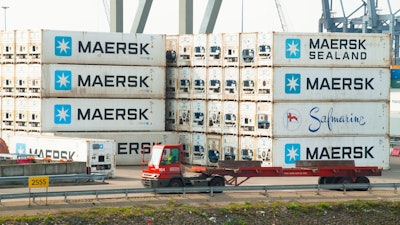
America has been the bastion of free trade and free markets since the end of World War II. Free traders do not like the idea of an industrial policy because they believe the policy leads to picking winners and losers. But in their arguments against an industrial policy, free traders don't mention that since the late 1940s, almost all of our trading partners have adopted industrial policies and mercantile strategies to unfairly take advantage of America.
Our 25 trading partners are really our competitors, all with value-added taxes (VATS) and tariffs. Also, most manipulate their currencies to keep the dollar overvalued, which affords them a surplus and America a trade deficit. The situation has caused Congress to take a hard look at countries like China, which manipulates its currency, unfairly subsidizes companies and industries, steals our technology, and in 2021 ran a surplus of $311 billion in trade with the U.S. This resulted in a trade deficit with China of $253 billion.
A New Industrial Policy
The U.S. did little to stop China's cheating and unfair trade until President Donald Trump implemented Section 301 tariffs on $300 billion of Chinese goods in 2018, as well as general tariffs on steel and aluminum.
A new era of industrial policy had officially begun. America is finally defending itself with an industrial policy like our competitors' and no longer relies on markets to pick the winners and losers. The Biden Administration's industrial policy retained the Trump-era tariffs and included tax rebates and many subsidies.
Bidenomics is an ambitious attempt by the Biden Administration to use government to bring manufacturing back to the U.S. after decades of offshoring. The administration says it's investing in America by "mobilizing historic levels of private sector investments in the United States, bringing manufacturing back to America after decades of offshoring, and creating new good-paying jobs, including union jobs and jobs that don't require a college degree."
Biden's plan is an industrial policy that uses subsidies, tax credits and tariffs to drive the new manufacturing initiative. The key is to use the money to stimulate private investment by American companies. Most of the money comes from three pieces of legislation approved by Congress:
- The Inflation Reduction Act. The legislation includes large investments in making healthcare and prescription drugs more affordable, fighting climate change and a 15 percent minimum tax on corporations. The bill consists of numerous investments in climate protection, including tax credits for households to offset energy costs, investments in clean energy production and tax credits aimed at reducing carbon emissions.
- The CHIPS and Science Act. In 2022, President Biden signed the CHIPS and Science Act (CHIPS), which makes a $53 billion investment in U.S. semiconductor manufacturing, research and development. The semiconductor companies stand to benefit from the government and local incentives made available to them through grants, matching funds, below-market loans and tax incentives. The law also creates a 25 percent tax credit for capital investments in semiconductor manufacturing, including those from the five major chipmakers: GlobalFoundries, Intel, Samsung Foundry, TSMC and Texas Instruments, which are building new semiconductor production facilities in the U.S. Since the beginning of the Biden-Harris Administration, companies have announced more than $231 billion in commitments in semiconductor and electronics investments in the United States.
- The Infrastructure Investment and Jobs Act (ILJA). The $1.2 trillion ILJA Act allocated $550 billion for new initiatives repairing and upgrading U.S. infrastructure. The bill includes investments to improve and repair roads and bridges, deliver clean drinking water to schools and homes, mitigate the effects of climate change, improve transportation, and create millions of good-paying jobs. These investments also include $47 billion to enhance resiliency in flood mitigation, wildfire, drought, coastal resiliency, waste management, ecosystem restoration and weatherization.
Specific allotments are as follows:
- Roads and bridges: $110 billion
- Public transit: $39 billion
- U.S. passenger rail system: $66 billion
- Broadband internet infrastructure: $65 billion
- Electrical grid: $65 billion
- Electric vehicles, buses, ferries: $7.5 billion
- Clean drinking water: $55 billion
- Airports: $25 billion
- Road safety: $11 billion
- Climate change mitigation: $28.5 billion
- Upgrading ports: $653 million
The government estimates the IIJA could create around two million jobs per year over the decade, but they don't estimate manufacturing jobs. The manufacturing industries most likely to participate are steel and metals producers, cement, lumber, plastics and plastic pipe manufacturers, EV manufacturers, and PPE manufacturers. It would also help the industrial policy if Congress and the White House could publicly agree to reduce the trade deficit and set a target for reshoring jobs.
The Coalition for a Prosperous America has modified the Standard Global Trade Analysis Project (GTAP) model to evaluate the impact of Biden's Industrial Policies and tax credits. Their model finds that providing U.S. manufacturers across all sectors with a reduction in their tax burden would increase real household income by $6,824, or 9.1 percent, and create 11 million new jobs. The economy would grow by $1.6 trillion, or 6.3 percent, in real GDP. Manufacturing output would increase by 31.9 percent, and exports would increase by 19 percent.
One of the big problems of huge government programs is that the expenditures are largely based on general goals rather than measurable objectives. It would really answer critics of the three programs if the money could be spent with measurable objectives stating the specific results expected and the timing of the expenditures. However, most politicians would rather not be held accountable and prefer general goals.
There is also no question that the government programs will increase the nation's debt, but critics don't agree on the amount of indebtedness. For example, the single greatest hurdle presented by the infrastructure bill is how its programs will be funded. The Congressional Budget Office estimates that the budget deficit will be nearly $260 billion over the next ten years. The Penn Wharton Budget Model at the University of Pennsylvania estimates the new deficits would total $351 billion, and The Committee for a Responsible Federal Budget estimates the bill would add $400 billion to the deficit.
After four decades of free trade, it is now obvious that it is, at best, a Faustian bargain. In pursuing free trade agreements since 1980, America has had to sacrifice millions of jobs, increase the trade deficit, accept the loss of technology and manufacturing industries, and see the decline of middle-class living standards. The policy efforts by both the Trump and Biden administrations are good steps towards building reciprocity into our trade. Tax rebates, tariffs, and subsidies also help offset the tariffs, value-added taxes, and unfair trade strategies used by our competitors for the last 50 years.


















